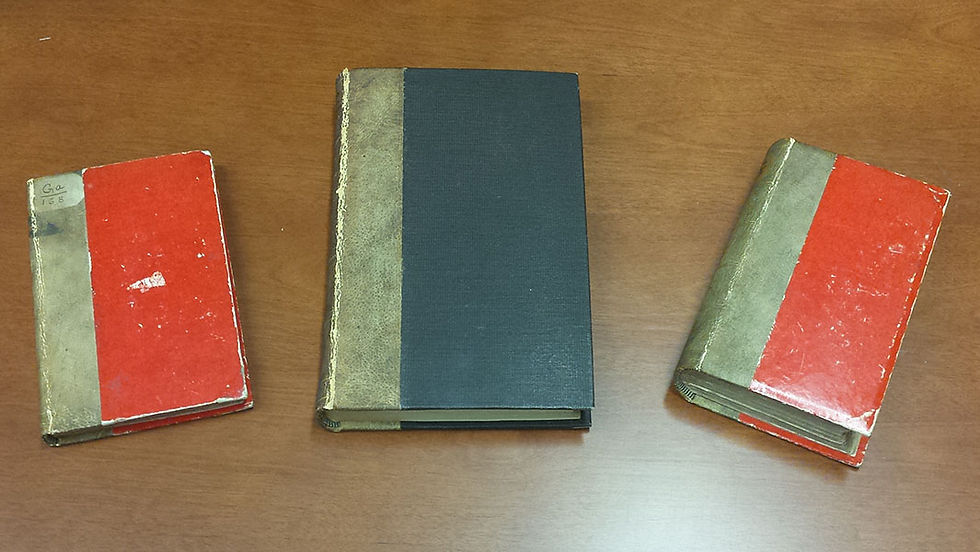Anthropodermic Bibliopegy – The Macabre Practice of Binding Books in Human Skin
- dthholland

- Dec 19, 2020
- 2 min read

In the 19th century, certain books were bound in a specific type of leather made from human skin, obtained from individuals who did not consent to it. This practice, known as Anthropodermic bibliopegy, was prevalent between the 16th and 19th centuries. Doctors primarily bound these books, sourcing the skin from deceased patients or criminals who had been executed. Through advancements in technology, we have identified 18 books bound with human skin, although it is believed that more may be held in private collections.
One of the most well-known instances of Anthropodermic bibliopegy involves three books that were once owned by Dr. John Stockton Hugh. These books were bound using the skin taken from the thigh of a single female patient, Mary Lynch, who tragically passed away in 1869 due to severe parasitic conditions. It took 20 years for her skin to be used in the binding of these three books, which focus on female health and reproductive systems.
Despite the explicit mention in the books that the binding is composed of human skin, historians remain uncertain as to why the 23-year-old doctor chose to preserve and tan the patient's skin. One prevalent theory suggests that doctors of the 19th century used their patients' skin to bind books as a way to immortalise them. During that era, doctors were often confronted with immense suffering, confusion, and gruesome sights. The concept of a clinical gaze was first explored in the book "The Birth of the Clinic," where doctors began to detach themselves from the human aspect of their patients. This detachment may have contributed to a shift in ethical standards, leading to the human skin bindings being viewed as a form of reverence rather than a macabre indulgence.

On the other side of the spectrum, the practice was seen as a punishment for criminals. During 1828 in Edinburgh, Scotland, William Burke killed over 16 people to sell to doctors as cadavers. Burke was sentenced to death, hanged and dissected publically. His skin was used to bind the dissecting doctor’s pocketbook which is now stored in the Surgeons Hall Museum in Edinburgh.
There are some books that historians can’t explain. ‘The Dance of Death’ was bound in human leather at the turn of the 19th century and contains stories and meditations on the subject of death. A book of French Erotica is bound with the skin of a woman’s breast and indeed, has a nipple on the cover.
In recent years, it has become possible to test the validity of these books. Out of 46 rumored books, only 18 have been confirmed as valid. While DNA testing is not an option, scientists can determine if the books are made from human skin by analyzing collagen levels, among other methods. The regulations concerning these books are straightforward: they can be kept in private museum collections and used for study as long as they are not exhibited as human curiosities. Although these books originate from various regions worldwide, they appear to be mostly of European origin.




































































































